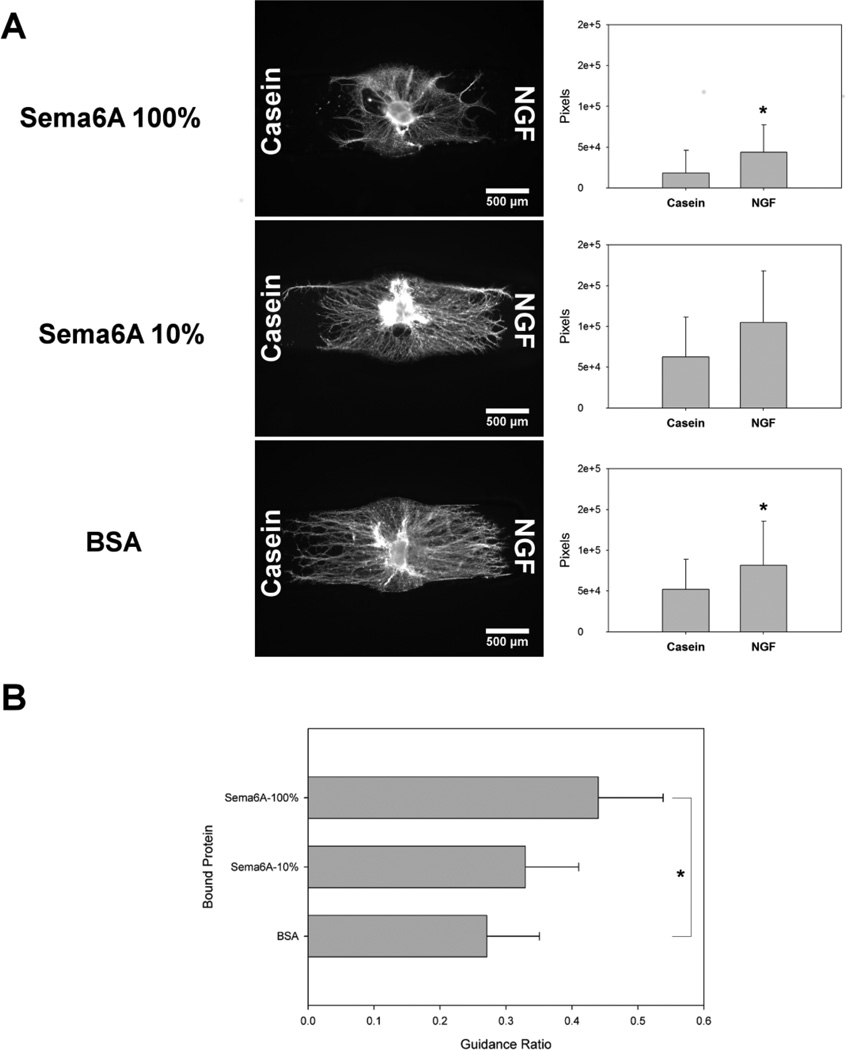Figure 6.
Effect of soluble gradients of casein (left channel) and NGF (right channel), in conjunction with immobilized Sema6A (high and low concentrations) and BSA, on DRG explant outgrowth. Each bound protein is immobilized on both sides of channel, and positive guidance ratios represent increased growth through bound protein toward NGF gradient, compared to control casein gradient. A Left, Sema6A immobilized with 100% CNBC-A showed sparse neurite growth in the casein gradient channel, with many neurites crowding the border of the bound region, but increased growth towards the NGF gradient. Right, separate pixel counts for β III tubulin positive neurites in both Casein and NGF channels. B, Sema6A immobilized with 10% CNBC-A demonstrated increased growth into the casein region, but still neurite density and overall length was higher towards NGF. C, BSA immobilized channels did not seem to show a difference in overall length of neurites, but increased density was apparent towards NGF. D, Guidance ratios corroborated the preference for neurite growth towards the NGF gradient channel, with the greatest difference from control seen with Sema6A-100% and the least in BSA (n=12). One-way ANOVA performed separately followed by the Games-Howell post-hoc analysis (*p < 0.05).

